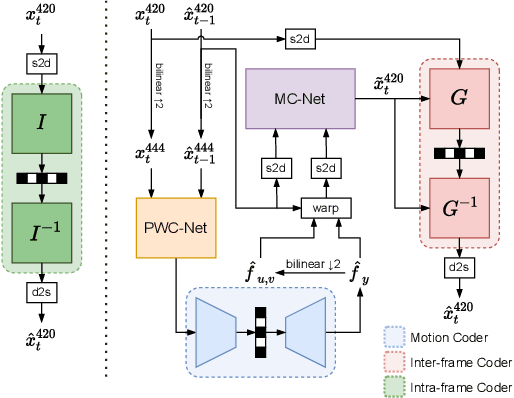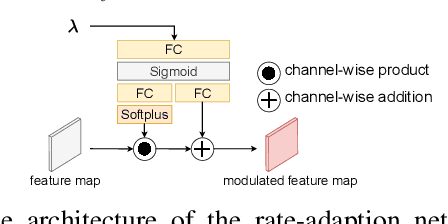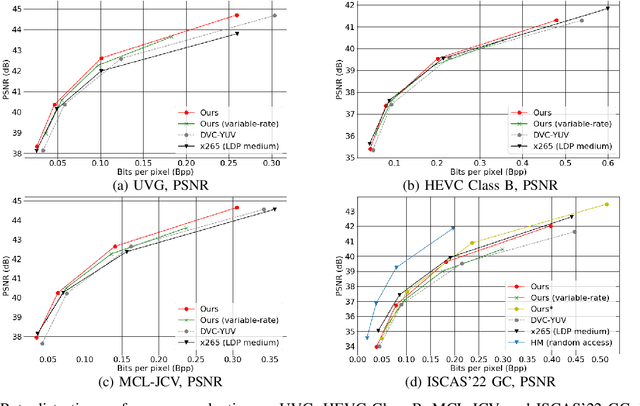Chih-Peng Chang
Learned Video Compression for YUV 4:2:0 Content Using Flow-based Conditional Inter-frame Coding
Oct 15, 2022



Abstract:This paper proposes a learning-based video compression framework for variable-rate coding on YUV 4:2:0 content. Most existing learning-based video compression models adopt the traditional hybrid-based coding architecture, which involves temporal prediction followed by residual coding. However, recent studies have shown that residual coding is sub-optimal from the information-theoretic perspective. In addition, most existing models are optimized with respect to RGB content. Furthermore, they require separate models for variable-rate coding. To address these issues, this work presents an attempt to incorporate the conditional inter-frame coding for YUV 4:2:0 content. We introduce a conditional flow-based inter-frame coder to improve the inter-frame coding efficiency. To adapt our codec to YUV 4:2:0 content, we adopt a simple strategy of using space-to-depth and depth-to-space conversions. Lastly, we employ a rate-adaption net to achieve variable-rate coding without training multiple models. Experimental results show that our model performs better than x265 on UVG and MCL-JCV datasets in terms of PSNR-YUV. However, on the more challenging datasets from ISCAS'22 GC, there is still ample room for improvement. This insufficient performance is due to the lack of inter-frame coding capability at a large GOP size and can be mitigated by increasing the model capacity and applying an error propagation-aware training strategy.
CANF-VC: Conditional Augmented Normalizing Flows for Video Compression
Jul 18, 2022



Abstract:This paper presents an end-to-end learning-based video compression system, termed CANF-VC, based on conditional augmented normalizing flows (CANF). Most learned video compression systems adopt the same hybrid-based coding architecture as the traditional codecs. Recent research on conditional coding has shown the sub-optimality of the hybrid-based coding and opens up opportunities for deep generative models to take a key role in creating new coding frameworks. CANF-VC represents a new attempt that leverages the conditional ANF to learn a video generative model for conditional inter-frame coding. We choose ANF because it is a special type of generative model, which includes variational autoencoder as a special case and is able to achieve better expressiveness. CANF-VC also extends the idea of conditional coding to motion coding, forming a purely conditional coding framework. Extensive experimental results on commonly used datasets confirm the superiority of CANF-VC to the state-of-the-art methods. The source code of CANF-VC is available at https://github.com/NYCU-MAPL/CANF-VC.
An Autoencoder-based Learned Image Compressor: Description of Challenge Proposal by NCTU
Feb 20, 2019



Abstract:We propose a lossy image compression system using the deep-learning autoencoder structure to participate in the Challenge on Learned Image Compression (CLIC) 2018. Our autoencoder uses the residual blocks with skip connections to reduce the correlation among image pixels and condense the input image into a set of feature maps, a compact representation of the original image. The bit allocation and bitrate control are implemented by using the importance maps and quantizer. The importance maps are generated by a separate neural net in the encoder. The autoencoder and the importance net are trained jointly based on minimizing a weighted sum of mean squared error, MS-SSIM, and a rate estimate. Our aim is to produce reconstructed images with good subjective quality subject to the 0.15 bits-per-pixel constraint.
 Add to Chrome
Add to Chrome Add to Firefox
Add to Firefox Add to Edge
Add to Edge